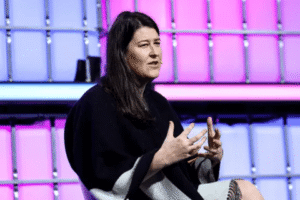
BlaBlaCar India Growth: How Carpooling Became Its Largest Global Market
BlaBlaCar India Growth: How Carpooling Became Its Largest Global Market
India has quietly become BlaBlaCar’s largest global market, marking a striking turnaround for the long-distance carpooling platform that once withdrew from the country. The BlaBlaCar India growth story reveals how digital payments, mobile penetration, and road infrastructure have redefined shared mobility for millions.
India Emerges as BlaBlaCar’s Core Market
BlaBlaCar estimates 20 million passengers in India this year, nearly a 50% jump from 2024. That figure surpasses both Brazil and France — its traditional strongholds. The app’s growth has come almost entirely through organic adoption and word of mouth, without local marketing or a permanent India team.
India’s booming digital ecosystem has been central to this growth. With over 700 million smartphone users and UPI handling 19.6 billion transactions in September alone, the environment for app-based transport is unmatched. Simultaneously, car sales reached 4.73 million in 2024, a record high that expanded the driver base critical to BlaBlaCar’s network.
How Infrastructure and Culture Drove Expansion
India’s vast population and evolving transport network provided fertile ground for carpooling. Public transport remains limited for many intercity routes, while road connectivity between towns and rural regions has steadily improved. For millions, BlaBlaCar offers an affordable, flexible, and social alternative to trains or private cabs.
Chief Executive Nicolas Brusson described the shift as structural, noting that India now represents a third of BlaBlaCar’s global carpool passengers. Between January and September 2025, users completed 13.5 million trips, compared to 9.1 million in the same period last year. Passenger activity peaks during weekends and holiday seasons, often connecting second-tier cities such as Pune–Nashik and Bengaluru–Chittoor.
A Data-Led Reentry After Past Struggles
BlaBlaCar first launched in India in 2015 but withdrew its local team in 2017 after limited traction and competition from Uber and Ola. The app, however, remained live — and in 2022, activity resurged dramatically. By 2025, monthly active users reached 1.1 million, with 75% passengers and 25% drivers.
The company’s approach has shifted to focus on data-driven trust and verification tools. Its ID Check feature, now global, started in India, validating users via government-issued documents. More than 70% of trips involve verified drivers, while machine learning–based “meeting-point logic” helps passengers coordinate easily, reflecting India’s informal transport hubs.
Monetization Deferred Amid Record Usage
Despite rapid adoption, BlaBlaCar has no immediate plans to monetize in India. Brusson said the focus remains on scaling usage before introducing fees. Still, the platform already facilitates substantial driver earnings — roughly ₹713 million ($8 million) in August alone. Drivers earn an average of ₹390 per seat, much lower than European markets but aligned with India’s purchasing power.
The platform continues to expand its operational footprint and expects to re-establish a local office by early next year. For now, support operates through a blended model, combining outsourced local teams and global oversight.
Challenges: Regulation, Support, and Cancellations
While momentum is strong, BlaBlaCar faces regulatory ambiguity around carpooling in several Indian states. Users have also cited delayed customer responses and last-minute cancellations as recurring issues. To enhance reliability, BlaBlaCar encourages complete profile verification and maintains multi-layered trust mechanisms, including user ratings and phone verification.
The app currently lacks live location-sharing, a feature users say could improve coordination for family and group travel. Nonetheless, the company’s iterative feature development for India — like improved meeting-point algorithms — shows its responsiveness to user behavior and local infrastructure gaps.
India’s Role in BlaBlaCar’s Global Strategy
Globally, BlaBlaCar expects to reach 150 million passengers this year, including users of its bus services abroad. The BlaBlaCar India growth narrative marks a significant geographic shift for the company — from Western Europe to emerging markets such as Japan, Turkey, and now India.
Brusson’s remarks encapsulate this pivot: the “center of gravity” of BlaBlaCar’s business has shifted decisively toward Asia. With its growing user base and ecosystem maturity, India stands at the heart of BlaBlaCar’s next phase.
Conclusion: What’s Next for Carpooling in India?
As India’s mobility landscape continues to evolve, BlaBlaCar’s story illustrates how digital adoption and community-driven models can redefine transport economics. Will India’s regulatory and infrastructural ecosystem keep pace with its demand for shared mobility?
Explore Business Solutions from Uttkrist and our Partners’, Pipedrive CRM [2X the usual trial with no CC and no commitments] and more uttkrist.com/explore



